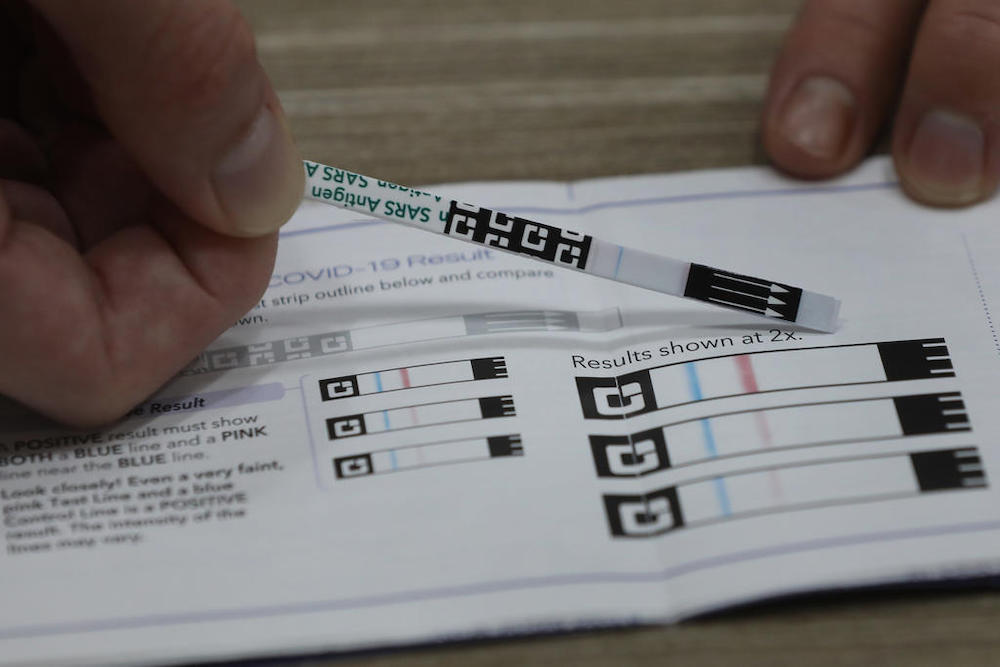SINGAPORE, Sept 25 — Those with a positive Covid-19 antigen rapid test (ART) result should be allowed to work from home if they are able to do so, the Ministry of Manpower (MOM) said in a tripartite advisory published toeday (September 25).
If working from home is not possible, employers should treat the period of absence as paid sick leave.
This can take the form of paid outpatient sick leave or paid hospitalisation leave, without requiring a medical certificate, said the advisory.
Workers with a positive ART result should immediately inform their employer and begin their self-isolation at home.
Employees should also not be asked to take no-pay leave for the period of self-isolation. They may return to the workplace when they get a negative ART result after 72 hours.
Employers should not ask these workers to report to the workplace even though they may be physically well.
The guidelines follows the change in approach by the Covid-19 multi-ministry task force in managing individuals who test positive on the ART but do not show any symptoms.
As was announced on September 17, such individuals are advised to self-isolate and monitor their health at home instead of rushing to the nearest general practitioner clinic or hospital, which may risk exposure to other infections.
“This is a risk-calibrated approach that will allow Singapore to focus the use of primary care and other healthcare resources on Covid-19 patients at higher risk of falling severely ill,” said the advisory.
MOM added that most workers do not need to undergo a confirmatory polymerase chain reaction (PCR) test after getting the first positive ART result.
They should take another ART at the end of their 72-hour isolation period instead.
If the result is negative, the employee may return to work and daily activities.
But if the result is still positive, the employee should continue to self-isolate and take another ART every 24 hours until he or she receives a negative ART result.
More information can be found on MOM’s website, where an FAQ page has been put up to address some common queries by employers and employees.
As an exception, these groups of people are recommended to take a confirmatory PCR test after testing positive on the ART:
Those working in healthcare and eldercare settings
Those working or studying in pre-schools or primary schools
People under quarantine order, stay-home notice or who have received a health risk warning
Individuals who are above 80 years old and vaccinated, or aged above 70 and unvaccinated
A confirmatory PCR test may also be necessary if symptoms arise.
Those with a positive PCR test result will be issued isolation or quarantine orders, as will their family members.
Under the Employment Act, these employees will be on paid hospitalisation leave during the period of quarantine, said MOM.
“Employees who test PCR negative and are physically well can return to work while those who are unwell should consult a doctor for further assessment.”
On whether workers can be placed on no-pay leave, the ministry said employers “should exercise compassion and flexibility” in supporting the needs of their employees.
“Every employee who has at least three months of service is entitled to up to 60 days of paid sick leave, including hospitalisation leave, which should generally be sufficient to cover self-isolation,” it added.
Employees who have household members that have a positive ART test but are otherwise physically well should monitor their health for 10 days and do regular ART testing as well.
Workplace close contacts of ART-positive employees are advised to do the same.
“There are no movement restrictions on these employees so long as their ART self-test results are negative. This means that they can return to the workplace if they are unable to work from home.
“But they should limit interactions with others as much as possible,” the advisory added. CAN — TODAY






















